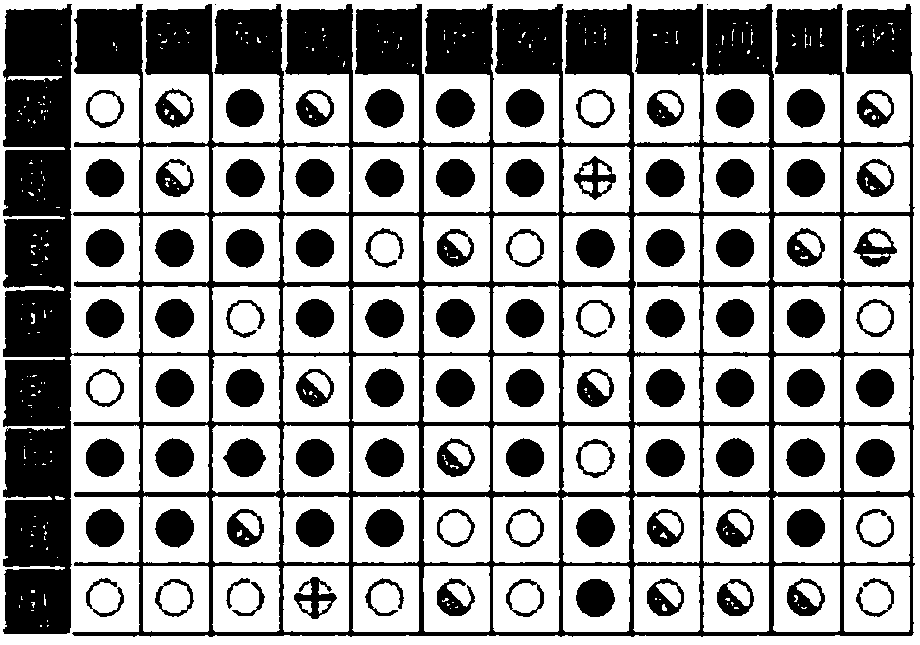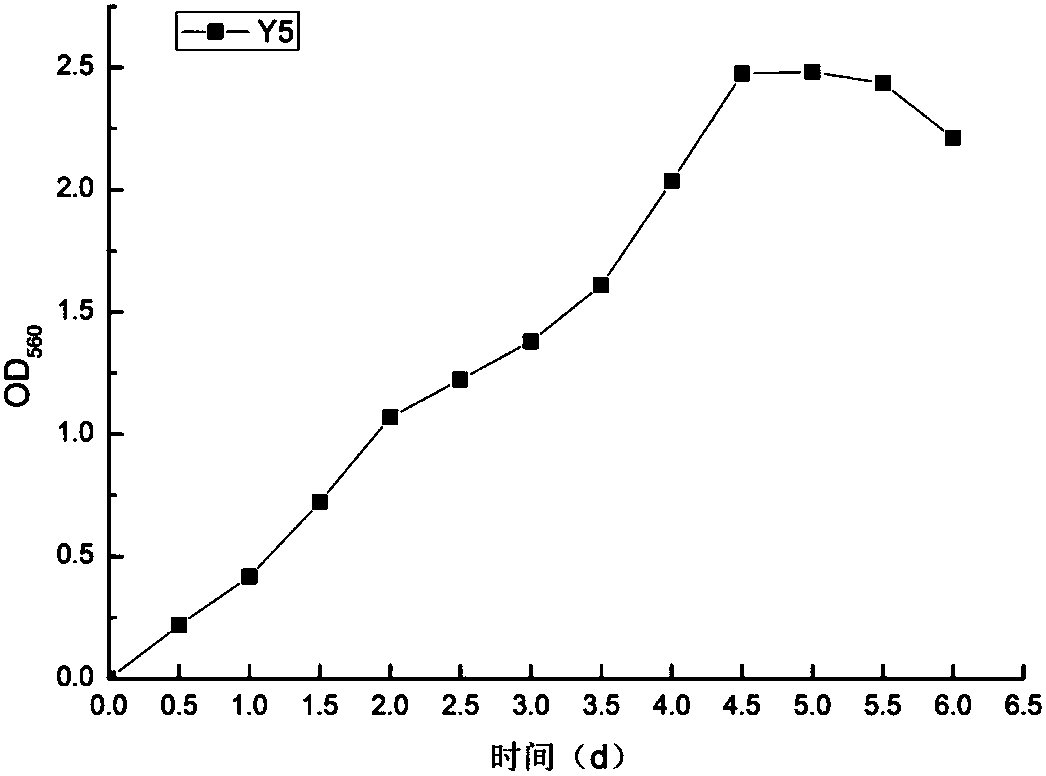Paracoccus denitrificans and method for disposing single-cell protein through high ammonia-nitrogen wastewater
A technology for denitrifying Paracoccus and single-cell protein is applied in the field of wastewater deodorization, which can solve the problems of waste of resources and secondary pollution, and achieve the effects of reducing the volatilization of ammonia, reducing the concentration of ammonia nitrogen, and realizing the effects of COD and ammonia nitrogen.
- Summary
- Abstract
- Description
- Claims
- Application Information
AI Technical Summary
Problems solved by technology
Method used
Image
Examples
Embodiment 1
[0033] Embodiment 1: the screening of hydrogen oxidizing bacteria
[0034] Take 10mL of water from a fish pond in Longquanyi, Chengdu, into an anaerobic bottle containing 150mL of inorganic salt medium, and fill with H 2 , O 2 and CO 2 The mixed gas (the molar ratio is 7:2:1, the text is the molar ratio), the pH is 7, 150r / min shaker culture under the condition of 30 ℃. Re-inflate every 24 hours, replace the medium every 48 hours, and transfer with a 2% inoculation amount after the gas utilization tends to be stable. Repeated transfer in this way for 40 days, after the gas utilization was stable, the bacteria solution was taken for gradient dilution (10 -2 -10 -7) were inoculated in the roller tube inorganic salt medium, and cultured on a shaker at 30°C for 48 hours after aeration. Use an elbow capillary to pick colonies and culture them in liquid inorganic medium, and then use the plate streak method to separate a single colony for more than three times until the colonie...
Embodiment 2
[0035] Embodiment 2: the identification of hydrogen oxidizing bacteria
[0036] The isolated and purified bacterial strain was observed under a scanning electron microscope (SEM), and the results were as follows: figure 1 Shown: the bacterium is short rod-shaped, 0.5-1.1 μm long, without flagella; Gram staining identified the bacterium as negative.
[0037] The entire genome of the pure strain was extracted using a bacterial whole genome rapid extraction kit, PCR amplification was performed by selecting bacterial 16SrRNA universal primers 27F and 1492R, and then sequenced and analyzed. The sequencing results were compared with BLAST in the NCBI database, and the strain was identified as Paracoccus denitrificans, named Paracoccus denitrificans Y5, which is the preserved strain Paracoccus denitrificans Y5CGMCC No.14118 of the present invention.
[0038] Physiological and biochemical identification of Paracoccus denitrificans Y5, using BiologGenⅢMicroPlate to carry out 94 kinds...
Embodiment 3
[0040] Example 3: Optimizing test on autotrophic growth conditions of Paracoccus denitrificans Y5
[0041] Method steps: first prepare inorganic salt culture medium and divide it into 250mL anaerobic bottles, seal with butyl rubber stopper, sterilize at 121°C for 20min, and use displacement exhaust method to distribute gas: use latex tube to connect H 2 Gas cylinder, and connect the needle at the other end of the latex tube, insert this needle into the anaerobic bottle through the rubber plug, and then insert the other needle into the anaerobic bottle through the rubber plug to exhaust, and then press the mixture ratio (H 2 :O 2 :CO 2 =7:2:1) Inject the corresponding amount of O with a syringe 2 and CO 2 . Then inoculate the seed inoculum of the bacterial strain of the present invention into an inflated anaerobic bottle, monitor the gas utilization with a barometer, and supplement the gas intermittently. Single factor test was used to investigate the effects of different ...
PUM
 Login to View More
Login to View More Abstract
Description
Claims
Application Information
 Login to View More
Login to View More - R&D
- Intellectual Property
- Life Sciences
- Materials
- Tech Scout
- Unparalleled Data Quality
- Higher Quality Content
- 60% Fewer Hallucinations
Browse by: Latest US Patents, China's latest patents, Technical Efficacy Thesaurus, Application Domain, Technology Topic, Popular Technical Reports.
© 2025 PatSnap. All rights reserved.Legal|Privacy policy|Modern Slavery Act Transparency Statement|Sitemap|About US| Contact US: help@patsnap.com



